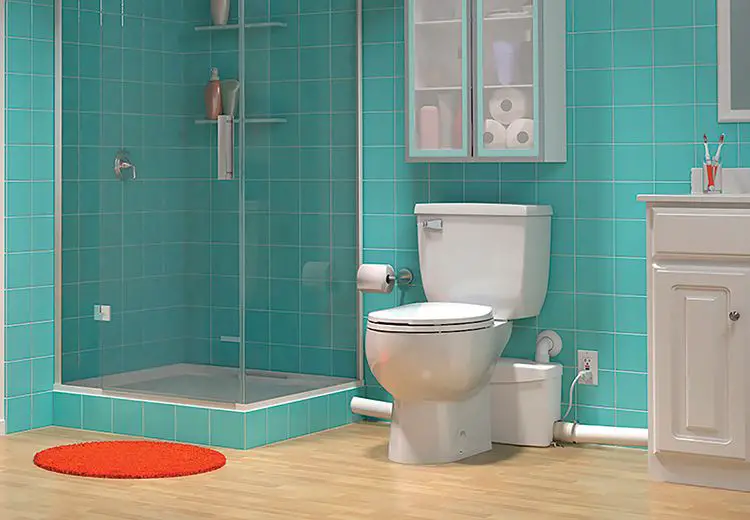Whether a basement toilet requires a pump depends on the home’s plumbing and sewer system. Here are some key factors to consider when determining if a pump is necessary for a basement toilet:
Page Contents
Gravity Drainage
In some cases, a basement toilet can drain by gravity alone without needing a pump. This is only possible if the main sewer line is lower than the basement floor and there is enough slope for waste to drain downward. However, many modern building codes require backflow valves which can prevent gravity drainage for basement plumbing fixtures.
Overhead Plumbing
If the main sewer line is above the basement level, an overhead toilet with overhead drainage pipes can sometimes allow a gravity drain. This involves running drainage pipes up to reach the main sewer line rather than downward. However, overhead drainage has more potential for clogs and backups.
Macerating Pump Toilet
A macerating pump toilet grinds waste into a slurry and pumps it to the main sewer line. The pump is built into the toilet itself. Macerating toilets are a self-contained pumping system that does not require an external pump tank. However, they involve more maintenance than gravity toilets.
Sewage Ejector Pump System
An external sewage ejector pump moves all waste from basement plumbing fixtures to the main sewer line. The pump is installed on a separate pump tank that collects waste from fixtures via gravity drainage. Once enough waste fills the tank, sensors activate the pump to push the sewage upward. This is the most common system for basement bathrooms that cannot drain by gravity.
Advantages of a Sewage Ejector Pump
- Allows installing a toilet, sink, shower and other fixtures even when gravity drainage is not possible
- External pump is quieter and has higher capacity than a macerating toilet
- Pump only runs when needed instead of each flush like a macerating toilet
Pitfalls of Basement Bathrooms Without Pumps
Attempting to install basement plumbing fixtures without a pump when gravity drainage is not possible can lead to a number of problems:
- Sewage backflows and floods – Waste can overflow from fixtures if unable to drain
- Malodors – Sewer gases can vent back into the basement
- Health hazards – Raw sewage exposure risks from overflows or backflows
- Clogged drains – Lack of downward slope causes chronic drain clogs and backups
Conclusion
In summary, a basement toilet will generally require a sewage ejector pump if gravity drainage to a lower main sewer line is not possible. The only exception is a basement with overhead plumbing that can drain downward by gravity alone. Attempting to install a basement bathroom without an ejector pump when gravity drainage won’t work can lead to sewage backflows, overflows, and serious health and safety hazards.
